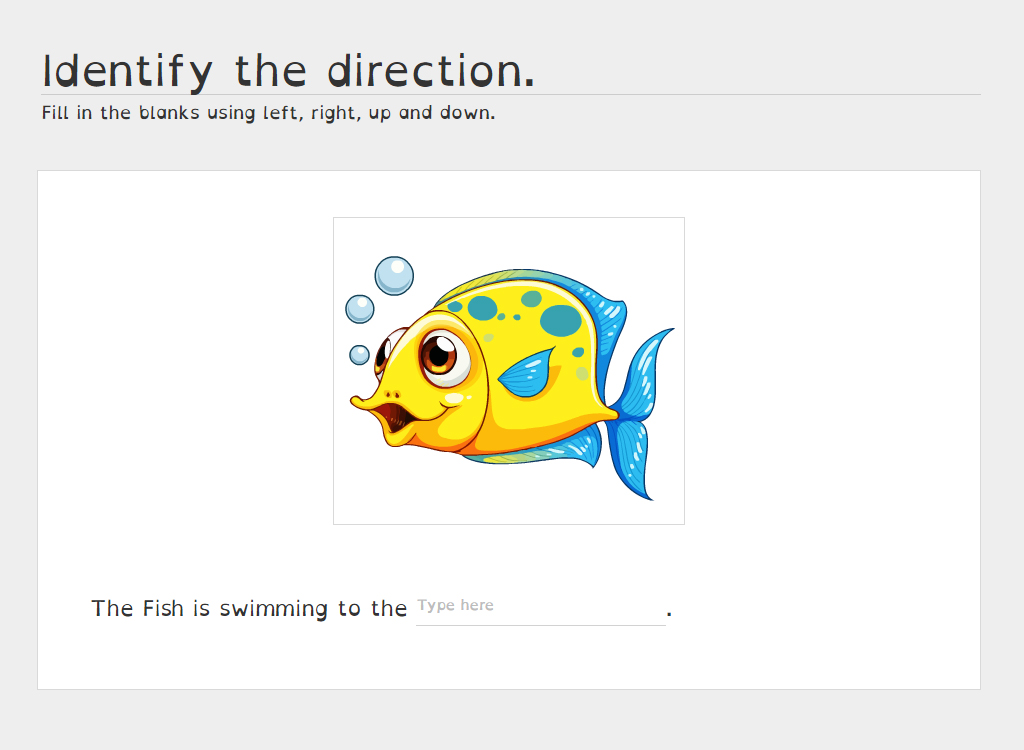Identify the Direction
This activity is for children who confuse b with d, w with m and who reverses letters – writing b for d, writing d for b etc. Some children may also have difficulty with spelling. A child may write ‘shrit’ for shirt or may write world as ‘wolrd’.
One reason for this could be the child’s difficulty in understanding direction. Children may have confusion with directions initially but by the age of seven they are able to overcome the confusion. But some children continue to get confused with similar looking words. They may read and write was as ‘saw’. These children continue to have problems with left and right direction. The confusion with direction may also cause difficulty in doing maths. It may also be the cause of poor memory as the right image is not recorded in the brain.
The activity requires the child to identify the direction. Some examples are given. The parents can give more such problems to their children.
Tips for parents
If your child is above seven years old and confuses similar looking alphabets, then this activity can be useful for her/him.
How you can take this activity forward at home?
A board can be used to teach direction. Given below is an activity you can do at home. Draw on the board a figure like this:
|
One |
Two |
Three |
Four |
Five |
|
Six |
Seven |
Eight |
Nine |
Ten |
|
Ten |
Eleven |
Twelve |
Thirteen |
Fourteen |
|
Fifteen |
Sixteen |
Seventeen |
Eighteen |
Nineteen |
You can describe each box and ask the child to name the box.
Examples:
- Which is the box at the top left hand corner?
- Name the box second right from box Eight.
- Name the box immediately left of box Seventeen. Like these so many questions can be asked.
Kitchen is a good place to teach direction. You can use the shelves where you keep cutlery etc to teach direction. Ask: What is on the left of cups? Many questions can be asked. The almirah where you keep clothes is another source to teach direction.
When you travel ask your child to tell the directions- to turn left or right. Ask your child to tell how to reach the post office, the bank etc.
Show photos and ask questions: Who is standing left to ____? Who is standing at extreme right?
You can keep things at a certain place and give directions to your child to locate it and bring it to you. For example: Bring the pen which is kept to the left of the English text book. (Keep a pen on both sides of the English text book.)
You need not bore the child to death with the questions on directions! But a judicious use of these activities would help the child to get a better sense of directions.
Ask your child to draw a map of your neighbourhood or the way to a particular building in your area. A map showing things that are stored in the supermarket, you and your child often visit, can be a good exercise not only for improving the sense of direction but also for improving memory and paying attention to details.
Play a ‘direction game’ .Ask the child to write down directions to reach an imaginary building. Turn right and walk for 3 miles and take the second left. Take the first left etc. The child should prepare the map. If you can draw the way as per the oral directions of the child then your child wins! Next is your turn and the child has to draw the way following your oral directions and reach the building. Occasional games like these can help.
Excellent material and videos can be had from the internet.
Search for these topics: Letter reversals, spatial problems, developing a sense of directions, vision therapy.
Developing Ocular Motor and Visual Perceptual Skills: An Activity Workbook by Kenneth A. Lane is an excellent book. It details many remedial measures.

